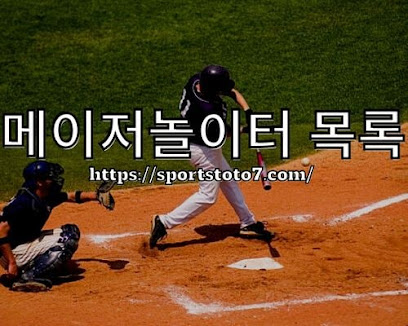About Handball
About Handball
Handaball
Handball (otherwise called group handball, European handball or Olympic handball) is a group activity wherein two groups of seven players every 슈어벳 (six outcourt players and a goalkeeper) pass a ball utilizing their hands fully intent on tossing it into the objective of the other group. A standard match comprises of two times of 30 minutes, and the group that scores more objectives wins.
Present day handball is played on a court of 40 by 20 meters (131 by 66 ft), with an objective in each end. The objectives are encircled by a 6-meter (20 ft) zone where just the safeguarding goalkeeper is permitted; objectives should be scored by tossing the ball from outside the zone or while "plunging" into it. The game is generally played inside, yet outside variations exist in the types of field handball, Czech handball (which were more normal previously) and ocean side handball. The game is quick and high-scoring: proficient groups currently ordinarily score somewhere in the range of 20 and 35 objectives each, however lower scores were normal until years and years prior. Body contact is allowed for the protectors attempting to prevent the assailants from moving toward the objective. No defensive gear is commanded, yet players might wear delicate defensive groups, cushions and mouth monitors.
The game was classified toward the finish of the nineteenth century in Denmark. The cutting edge set of rules was distributed on 29 October 1917 in Berlin, which is viewed as the date of birth of the game, and had a few amendments since. The principal official handball match was played around the same time in Germany. The principal worldwide games were played under these guidelines for men in 1925 and for ladies in 1930. Men's handball was first played at the 1936 Summer Olympics in Berlin as outside, and the following time at the 1972 Summer Olympics in Munich as inside, and has been an Olympic game since. Ladies' group handball was added at the 1976 Summer Olympics.
The International Handball Federation was shaped in 1946 and, starting at 2016, has 197 part alliances. The game is most famous in Europe, and European nations have won all awards yet one in the men's big showdowns beginning around 1938. In the ladies' big showdowns, just two non-European nations have brought home the championship: South Korea and Brazil. The game additionally appreciates ubiquity in East Asia, North Africa and portions of South America.
Beginnings and improvement
Games like handball were played in Ancient Greece and are addressed on amphorae and stone carvings. Albeit point by point text based reference is uncommon, various portrayals of ball games are being played where players toss the ball to each other; once in a while this is done to stay away from block attempt by a player in the rival group. Such games were played generally and filled in as both a type of activity and a get-together.
There is proof of antiquated Roman ladies playing an adaptation of handball called expulsim ludere. There are records of handball-like games in archaic France, and among the Inuit in Greenland, in the Middle Ages. By the nineteenth century, there existed comparable rounds of håndbold from Denmark, házená in the Czech Republic, handbol in Ukraine, and torball in Germany.
The group handball match-up of today was classified toward the finish of the nineteenth century in northern Europe: essentially in Denmark, Germany, Norway and Sweden. The originally composed set of group handball rules was distributed in 1906 by the Danish rec center educator, lieutenant and Olympic medalist Holger Nielsen from Ordrup language school, north of Copenhagen. The cutting edge set of rules was distributed on 29 October 1917 by Max Heiser, Karl Schelenz, and Erich Konigh from Berlin, Germany; this day is along these lines considered the "date of birth" of the game. The very first authority handball match was played on 2 December 1917 in Berlin. After 1919 the principles were improved by Karl Schelenz. The main worldwide games were played under these standards, among Germany and Austria by men in 1925 and among Germany and Austria by ladies in 1930.
In 1926, the Congress of the International Amateur Athletics Federation named a panel to draw up global standards for field handball. The International Amateur Handball Federation was framed in 1928 and later the International Handball Federation was shaped in 1946.
Men's field handball was played at the 1936 토즈토토 Summer Olympics in Berlin. During the following a very long while, indoor handball thrived and developed in the Scandinavian nations. The game reappeared onto the world stage as group handball for the 1972 Summer Olympics in Munich. Ladies' group handball was added at the 1976 Summer Olympics in Montreal. Because of its prevalence in the locale, the Eastern European nations that refined the occasion turned into the predominant power in the game when it was once again introduced.
The International Handball Federation coordinated the men's big showdown in 1938 and each four (now and again) a long time from World War II to 1995. Since the 1995 big showdown in Iceland, the opposition has been held at regular intervals. The ladies' big showdown has been held beginning around 1957. The IHF likewise coordinates ladies' and men's lesser big showdowns. By July 2009, the IHF recorded 166 part leagues - around 795,000 groups and 19 million players.
Rules
The principles are spread out in the IHF's arrangement of rules.
Rundown
Two groups of seven players (six court players in addition to one goalkeeper) take the court and endeavor to score focuses by placing the game ball into the rival group's objective. In taking care of the ball, players are dependent upon the accompanying limitations:
Subsequent to getting the ball, players can pass, keep ownership, or shoot the ball.
Players are not permitted to contact the ball with their feet, the goalkeeper is the just one permitted to utilize their feet however just inside the objective region
In the case of having the ball, players should spill (like a b-ball spill), or can make up to three strides for as long as three seconds all at once without spilling.
No assaulting or guarding players other than the safeguarding goalkeeper are permitted to contact the floor of the objective region (inside six meters of the objective). A shot or pass in the objective region is substantial whenever finished prior to contacting the floor. Goalkeepers are permitted external the objective region, however are not permitted to cross the objective region limit with the ball in their grasp.
The ball may not be passed back to the goalkeeper when they are situated in the objective region.
Remarkable scoring open doors can happen while assaulting players bounce into the objective region. For instance, an assaulting player might get a pass while sending off inside the objective region, and afterward shoot or pass prior to contacting the floor. Multiplying happens while a jumping assaulting player passes to another plunging colleague.





Comments
Post a Comment